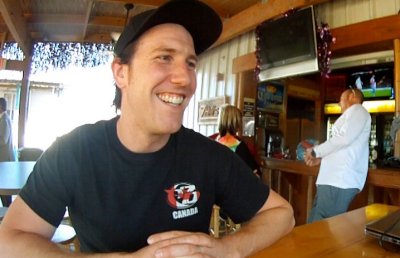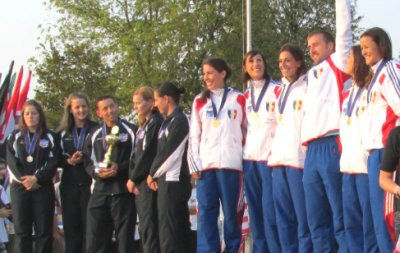
National
Skydiving
League
226 Pecan Street
Deland FL 32724
tel: (386) 801-0804
© 2003 - 2025
All Rights Reserved


226 Pecan Street
Deland FL 32724
tel: (386) 801-0804
© 2003 - 2025
All Rights Reserved


Each skydiving discipline has a subcommittee that prepares the topics for the votes by the plenum. Formation Skydiving competition gets the attention of currently nine committee members (Chair Trude Sviggum - Norway, Deputy Chair Mark Szulmayer - Australia, Eric Heinsheimer - USA, Kirk Verner - USA, Jeremie Rollett - France, Rainer "Exi" Hoenle - Germany, Sara Sacchet - Italy, Martin Lemay - Canada, Peter Straede - Denmark).
The Sun Path Products NSL News recently brought two topics to the attention of the audience, which will be discussed and decided upon at the upcoming meeting. The story on 23 December 2014 covered the eligibility of competitors who change from one national team to another. Three other stories were related to Block 10 (Diamond - Bunyip) and the discussion concluded on 27 December 2014.

It's not a new topic at all. In fact, it was not too long ago when the IPC made adjustments to those specific rules.
The most exciting competition between Golden Knights and French Girls at the World Cup 2014 in Banja Luka, including jump-off and tie-breaking procedures, had a triggering effect. It caused an adjustment to the rules that was decided upon at the IPC meeting last year. The new tie-breaking procedures were supposed to simplify the rules and consider only the performance in the last common round of the tied teams.
| 3.2.2.1.2 For determination of the final placings: i.)) One tie break round, if possible (for the first three placings only). The tie break round will be the next drawn round of the competition. ii.)) The fastest time (measured to hundredths of a second) to the last common scoring formation in the last completed round after the jumpoff. |
| World Cup 2013 | Rd. 1 | Rd. 2 | Rd. 3 | Rd. 4 | Rd. 5 | Rd. 6 | Rd. 7 | Rd. 8 | Rd. 9 | Rd. 10 | Rd. 11 | Total | Avg | |
| R | AAA Class | O,4,H,3 | 9,17,P | L,1,G,12 | 7,10,21 | 16,E,A,15 | 8,2,B | 18,5,Q | F,14,K,N | M,C,D,13 | 20,J,19 | 22,11,6 | Total | Avg |
| 1 | Aerodyne French Girls | 21 | 27 | 16 | 18 | 20 | 17 | 17 | 23 | 24 | 20 | 17 | 220 | 20.0 |
| 2 | Golden Knights | 22 | 25 | 17 | 17 | 19 | 18 | 21 | 20 | 24 | 20 | 17 | 220 | 20.0 |

However, the 2014 competition season provided the officials with new experiences and information, which did not support the new tie-breaking rules. Committee member Rainer "Exi" Hoenle from Germany explained the problems that the new tie-breaking rules were facing:
"No scoring system in use up to today is capable to produce what the rules require: To determine the time to a 1000th of a second, because this function is normally not needed in the system. The inbuilt clock to determine the working time cannot be taken for the purpose of determining the time. Both developers of the most used systems, Ted Wagner from OSHD! and Dirk Venter from InTime, were asked and confirmed."

| (1) One tie-breaking round.
(2) (a) In a first step all results in rounds, which have been thrown away for any rule-reason, like the worst score in a round in CF or the scores in a team accuracy event are included into the respective completed rounds as valid and scoring results for the tie-breaking procedure. (b) The team or competitor with the best result in any single round is the winner. If the tie is not broken, the second best, third best etc. result is determined to break the tie until no more round remains. (c) If the tie is not broken with this method the team or competitor with the higher number of rounds without any infringement is the winner. This includes all rounds in team events like CF and FS (5:0 decisions for a point on the collated score sheet or 5 dead centers in AL-team) or in individual events (no OD in SP, no penalty in Style). (d) If the tie is not broken, the highest score of a team or competitor in a single round, starting with the last round and comparing the scores round by round in reverse order until the tie is broken. (3) (a) Determination of time within the working time to complete the last COMMON formation in the last round, for which both teams show a 5:0 decisions for the point in the sequence as documented in the collated score sheet. (b) Timing is done with the use of a timing device, which is able to measure time to the 1/100 of a second. (c) The location for starting time on the video and for stopping the time at the formation as described in (3a) is determined by a video-preview through the Chief Judge or the Event judge for the discipline. The location is described/demonstrated by the CJ/EJ leading the procedure. (d) All times of the judges will be added and the average is determined to the third decimal without a rounding applied. The team with the lowest time will be declared to be the winner. (4) If the tie remains, both teams/ competitors will be ranked ex aequo. |

He proposes tie-breaking procedures for all competition disciplines. His proposed new rules would apply to Formation Skydiving competition in a very similar way as it was until December 2013. The highest score in any of the competition rounds would be the winner after a tie in the jump-off, followed by the second highest score etc. The highest score would not first be found by checking the numbers in reverse order as it used to be. The stop watch for the last round comes at the very end.
This method would make it very unlikely that the faster completion of the last scoring point would matter, and the French Girls would again be the winner in Banja Luka. The Golden Knights had the fastest completion of the last common point in the jump-off round. The proposal also introduces a new "quality" of scores, as only the totally "clean" rounds would be considered.